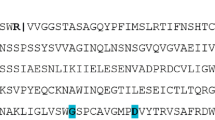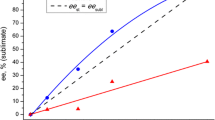Summary.
Chum salmon trypsin-catalyzed peptide synthesis has been studied by using nine series of "inverse substrates," i.e., p-amidinophenyl, p- and m-guanidinophenyl, p- and m-(guanidinomethyl)phenyl, and four position isomers of guanidinonaphthyl esters derived from N α-(tert-butyloxycarbonyl)amino acid as acyl donor components. They were found to couple with an acyl acceptor such as l-alanine p-nitroanilide to produce dipeptide in the presence of trypsin. All substrates tested in this study undergo less enantioselective coupling reaction, and the coupling product was the favorably obtained d-series rather than l-series (in the present case; N α-Boc-d-Ala and N α-Boc-l-Ala). The optimum condition for the coupling reaction was studied by changing the organic solvent, buffer solution, pH, and acyl acceptor concentration. It was found that the enzymatic hydrolysis of the resulting product was negligible.
Similar content being viewed by others
Author information
Authors and Affiliations
Additional information
Received August 10, 2000 Accepted December 2, 2000
Rights and permissions
About this article
Cite this article
Sekizaki, H., Itoh, K., Toyota, E. et al. Chum salmon trypsin-catalyzed preferential formation of peptides containing d-amino acid. Amino Acids 21, 175–184 (2001). https://doi.org/10.1007/s007260170024
Issue Date:
DOI: https://doi.org/10.1007/s007260170024




